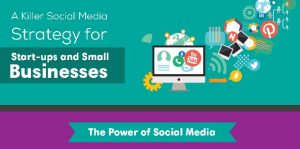
geralt / Pixabay
Triggering and unplanned events, like the healthcare crisis, occur. In some instances, we can mobilize and marshal on. Other times, we may find that moving forward requires a strategic business pivot. What does it mean to pivot? In basketball, a pivot maintains your position while creating a new angle of attack. When applied to business, this term has come to reflect the need to look for new options, move in a different direction, or to make a shift. Once made, ask whether a strategic pivot should remain a part of your business strategy.
Eric Ries, entrepreneur and author of The Lean Startup, defines a business pivot as a “structured course correction designed to test a new fundamental hypothesis about the product, strategy, and engine of growth.” Pivots do not need to be drastic. Making adjustments to messaging to communicate more clearly or employing different channels can be a pivot. Sometimes a pivot has strategic implications, such as shifting focus to different segments and verticals or completely changing channel partners.
Should Pivots Made During a Crisis be Permanent?
During a crisis, when a pivot is necessary to survive, speed is of the essence. In such circumstances, pivot as quickly as you can to avoid wasting more time, energy, and resources, especially cash. When employing strategic pivots, it is essential to determine if the pivot provides an opportunity to thrive and is aligned with your vision and mission. This requires taking the time to ask at least five questions about the changes you’ve made to address the crisis to determine if they warrant a permanent pivot.
Do any of the changes we made during the crisis….
- Help us be more effective?
- Help us be more efficient?
- Improve our ability to deliver more customer value?
- Create a competitive advantage?
- Boost productivity?
If the answer is yes to one or more of these questions, then it may make sense to make the shift permanent.
A Change in Perspective Can Inspire a Strategic Pivot
The thing about unplanned events is they often alter our perspective. A change in perspective can be an unexpected silver lining. Take a moment to step back and consider how your perspective has changed. What that might mean for your next move? For example, the coronavirus has changed companies’ perspectives about remote work and different ways to engage the customer.
A crisis might force an innovation in terms of how you modify services and products to support customers better. For example, a salon here in Austin contacted customers in isolation during the health crisis. They announced a product package for covering roots. It contained the salon’s personal hair color formula, a bowl, gloves, and an applicator for $ 30.00. The product was a huge hit because the owner recognized that she could provide something of value outside the normal salon setting. Necessity, being the “mother of invention,” sparked the product idea applicable for customers who have long absences from home. Pivots present growth opportunities. How can you use unforeseen circumstance to make your customer interactions more valuable and create new streams of revenue?
How your customers react to the strategic pivots you make during a crisis provides tremendous insight into whether a shift is warranted and should be permanent. For example, SaaS companies that find their conversions from free trials to paid subscriptions to be lower than projected should investigate whether there is an experience issue. Customers are sending a message worth listening to that suggests a business pivot is in order.
Whether implementing a strategic pivot as a result of a crisis or because you feel your company is in a rut, give it serious consideration before either writing it off or making it permanent. Make sure the pivot presents opportunities to create more customer value and a stronger competitive advantage, as well as aligning with your organization’s goals for the big picture.
Business & Finance Articles on Business 2 Community
(41)







